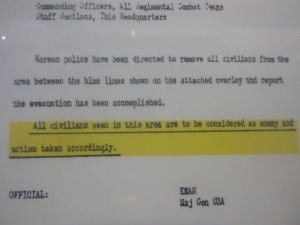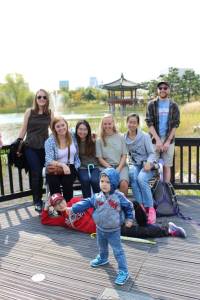Counting Blessings
You know, I like my life.
I like Sundays like today, when I don’t have to rush to church and sneak in the back, hoping no one will notice. I liked this whole week, waking up at 7 or 8am to go swimming with my housemate Emily, or go running on the wooden path downtown while the sun is still low enough to glow warm and make everything look friendly.
I like walking directionless around campus with my housemate Will, hearing his patient insight about dealing with frustrating relationships. I’m grateful to feel comfortable enough to say what’s on my mind, and more grateful that he feels comfortable enough to call me out when I make vague blanket statements, or can’t see past my own perspective. He’s patient, and talks me through things until I begin to see a different way, which is all but necessary when living in intentional community with four others in our program. I’m struggling. I’m frustrated. I’m confused why loving others is so hard sometimes. But, I digress. I like being part of a challenging, intentional relationship that might teach me valuable things about loving others. I like when Will unexpectedly hugs me in the woods, engulfing me into him in a goofy, playful way that lets me know we’re ok, and we’re on the same page.
I like going to the school cafeteria after church and having Korean people to wave at, chat with, and eat with. Oh what a far way things have come since I was that middle school girl with a torn lunchbox and nowhere to go.
I like my when my Korean friend 한별(Hanbeol) comes over in workout clothes, excited and ready for whatever workout I throw at us. I’m grateful for the familiarity of teaching fitness again, even if it’s just us outside on the track. It’s nice to be doing burpees, mountain climbers, and jumping jacks next to someone who’s really giving it her all, as tired or more tired than I am, but still gritting her teeth and scrunching her face in determination. It’s nice to have a workout buddy, to guide and explain and encourage. Lately I’ve felt pretty dumb, useless, and slow, forgetting my co-workers Korean names, failing to control or teach a class of elementary school kids, or overhearing others talk in hushed Korean about that foreigner who “really doesn’t know a lot of Korean, does she?”. But tonight, I was in my element, all of me on board. I like collapsing into the grass after the last of 3 sets of mountain climbers, or burpees, and hear 한별(Hanbeol) collapse, gasping beside me, knowing we’re in this together.
But what I like the most is laying supine on the cold, short turf, exhausted, satisfied, and staring at the impossibly large cloudless sky above us. The deafening vastness fills my mind till I can’t think or feel anything else. Only a couple of stars can just barely be seen.
“And He brings out the starry hosts by number; He calls them by name.”
I love it when scripture pops into my head, giving me hope that something within me is right. I like being aware of our God, not through my own mental effort of bringing Him to mind, squeezing Him into my full, busy head, but being empty, and having the knowledge of God effortlessly fill the empty space with grand vastness and holy understanding. I like praying in the comforting free-ness of a God who hears me, listening also to 한별(Hanbeol) echo the prayer in Korean, on the grass beside me, praying to our God, perhaps up there in that impossibly large sky. I like naming out things that are perfect to us in the moment – the weather, the workout, the time of day right when day meets night, our friendship. All gifts from God, whose love seems so real, and so close to us in that moment.

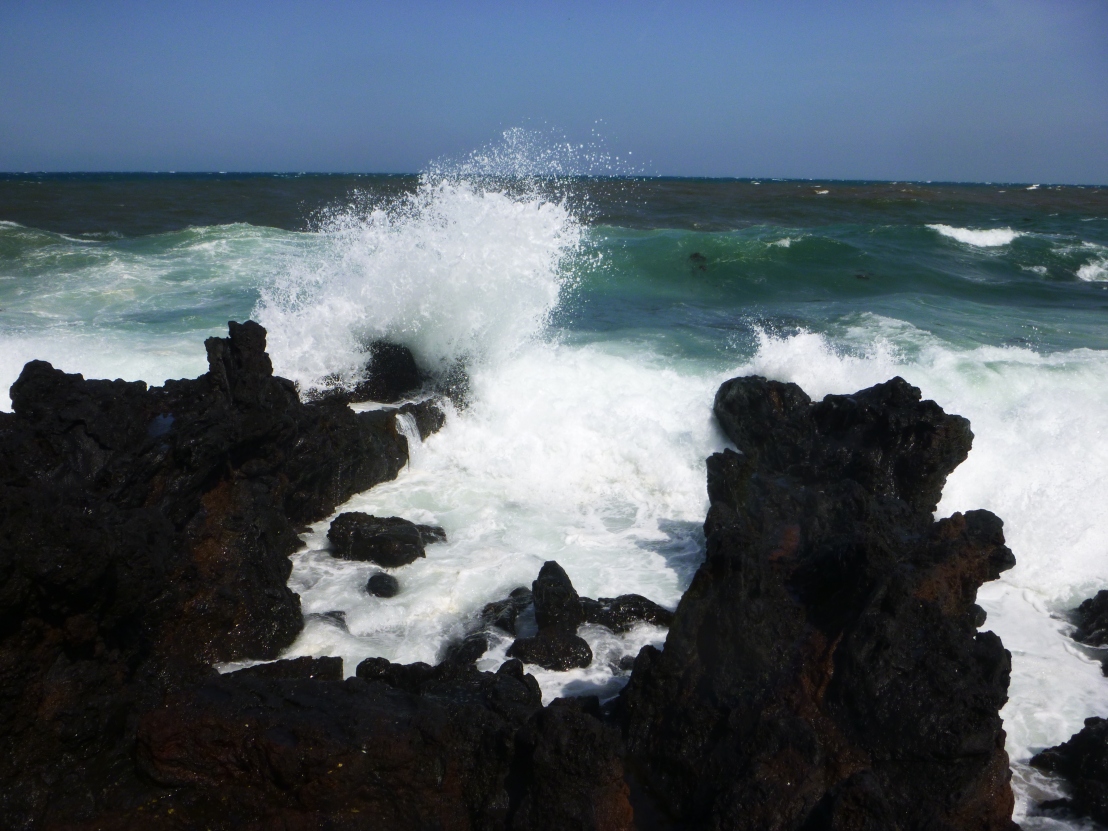
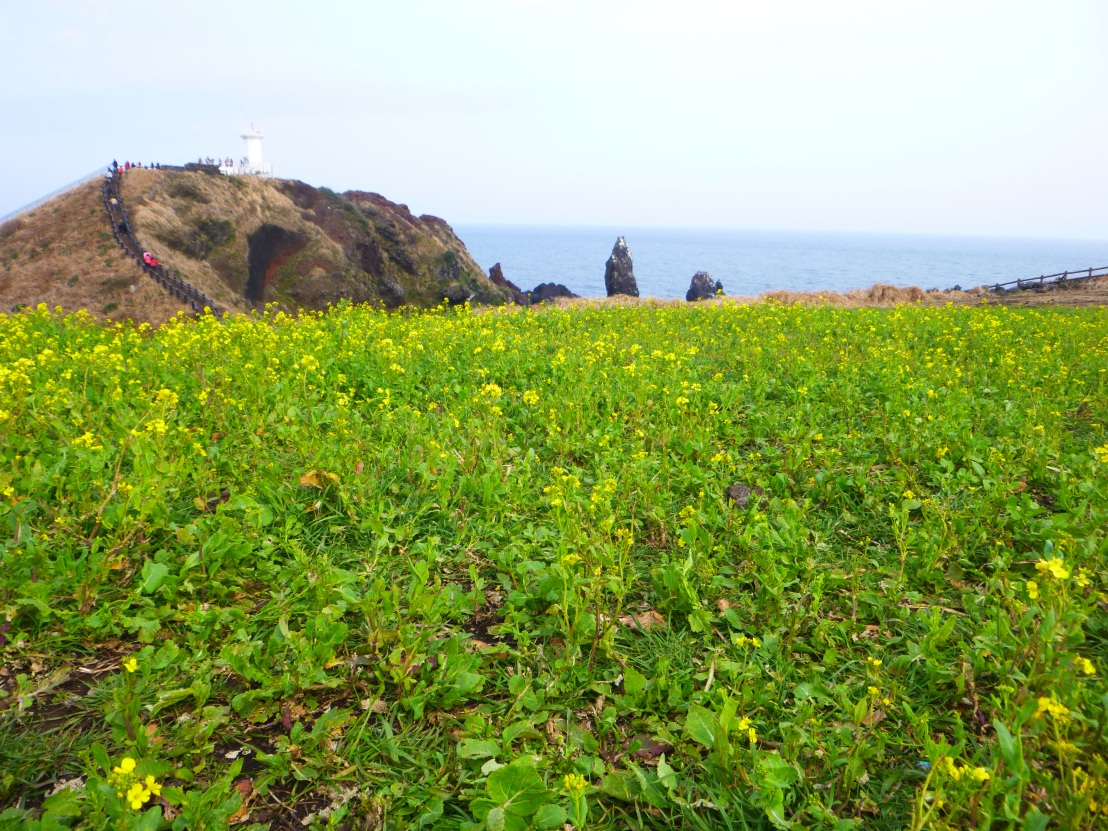







 The Haenyeo’s dangerous and physical lifestyle created a unique tight-knit sisterhood involving safety rules like ‘no diver dives alone’ and raising daughters to come alongside mothers on swims.
The Haenyeo’s dangerous and physical lifestyle created a unique tight-knit sisterhood involving safety rules like ‘no diver dives alone’ and raising daughters to come alongside mothers on swims. 

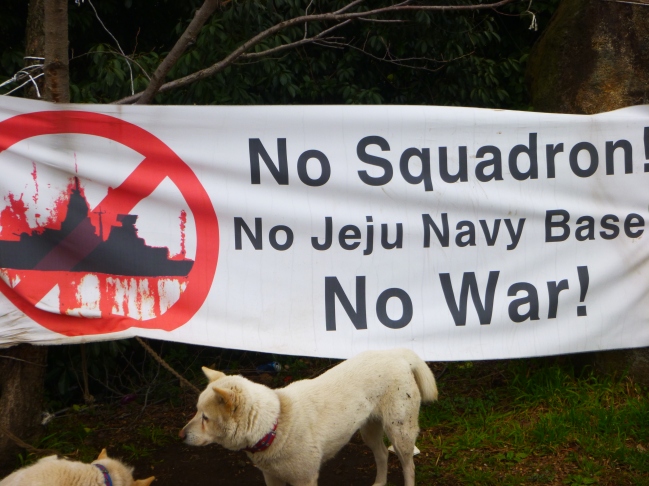

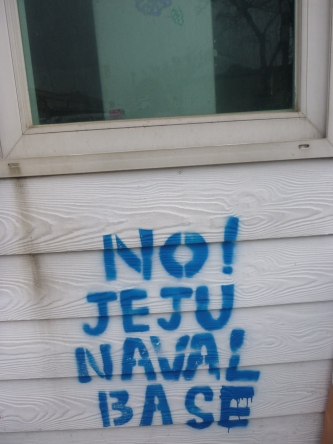 The introduction of navy base soldiers will triple the population on the village, and it’s hard to see how this village of life, peace and culture will fare. We spoke with a pastor Sunday who told us that the navy base will defend peace on the island, but my head is full of questions as to who the defense is for. In theory, such a missile on Jeju could reach China, Japan, and North Korea. Whoever the system is put in place for, I’m wondering if the US’s new foreign policy to move military strategy away from the Middle East and shift it to Asian-Pacific countries, particularly China has something to do with it. I wonder how militarization can promote peace, not only in Gangjeong, but in bases around the world. How can the ability to park nuclear powered and possibly nuclear armed aircraft carriers in Jeju help bring peace to the island? I wonder what the activists marching anti-base signs are hoping for, now that the base construction is finished. I wonder if the trees will get to keep their crochet outfits, and windows will keep wearing flowers. As we ate lunch together in a make-shift kitchen close to the base, I looked up to realize the curious group of activists, Koreans, Americans, professors, artists, and volunteers I was sharing a meal with. Most of them realized the Navy Base was here to stay. But there they all were, peacefully protesting and making art and discussing the possibility of a building a peace school in their village.
The introduction of navy base soldiers will triple the population on the village, and it’s hard to see how this village of life, peace and culture will fare. We spoke with a pastor Sunday who told us that the navy base will defend peace on the island, but my head is full of questions as to who the defense is for. In theory, such a missile on Jeju could reach China, Japan, and North Korea. Whoever the system is put in place for, I’m wondering if the US’s new foreign policy to move military strategy away from the Middle East and shift it to Asian-Pacific countries, particularly China has something to do with it. I wonder how militarization can promote peace, not only in Gangjeong, but in bases around the world. How can the ability to park nuclear powered and possibly nuclear armed aircraft carriers in Jeju help bring peace to the island? I wonder what the activists marching anti-base signs are hoping for, now that the base construction is finished. I wonder if the trees will get to keep their crochet outfits, and windows will keep wearing flowers. As we ate lunch together in a make-shift kitchen close to the base, I looked up to realize the curious group of activists, Koreans, Americans, professors, artists, and volunteers I was sharing a meal with. Most of them realized the Navy Base was here to stay. But there they all were, peacefully protesting and making art and discussing the possibility of a building a peace school in their village.



 there to learn more about the history of Korea. But before we dipped our feet into that, we had a bunch of fun playing in the first snowfall of the year! Even though we were on retreat with other very professional missionaries in the area, you better believe we had a couple snowball fights (‘noon-saum’ in Korean) between our official business.
there to learn more about the history of Korea. But before we dipped our feet into that, we had a bunch of fun playing in the first snowfall of the year! Even though we were on retreat with other very professional missionaries in the area, you better believe we had a couple snowball fights (‘noon-saum’ in Korean) between our official business. 
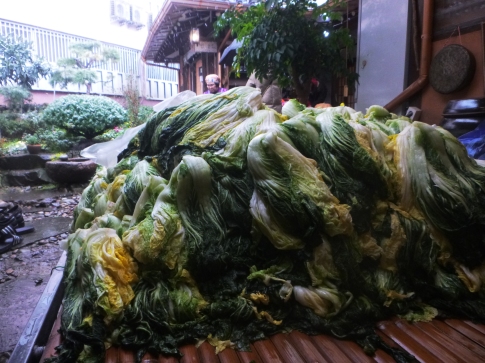




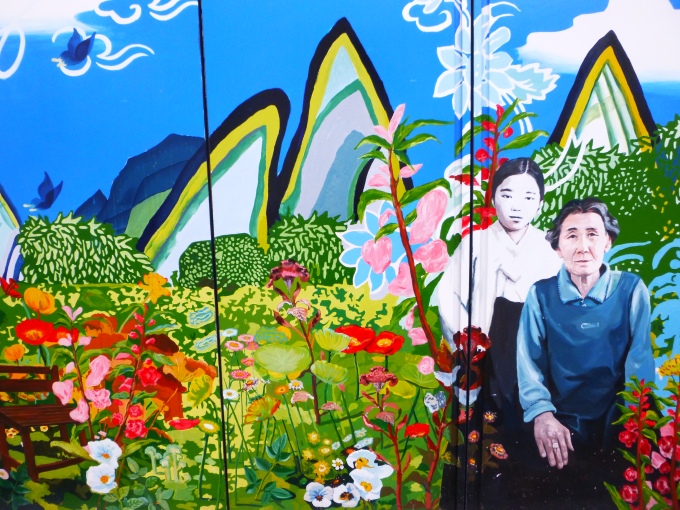
 We hear stories about this all the time in Korea : how a couple strong-willed people completely stood their ground against title waves of apathy from disbelievers, then finally have the injustice they’ve suffered made known to the entire world, to appear in history books and have memorials built. I’ve come to believe there’s nothing stronger than the human spirit. It may be winners who write the textbooks, but it’s those who’ve suffered injustice who will cry out until they’re heard.
We hear stories about this all the time in Korea : how a couple strong-willed people completely stood their ground against title waves of apathy from disbelievers, then finally have the injustice they’ve suffered made known to the entire world, to appear in history books and have memorials built. I’ve come to believe there’s nothing stronger than the human spirit. It may be winners who write the textbooks, but it’s those who’ve suffered injustice who will cry out until they’re heard.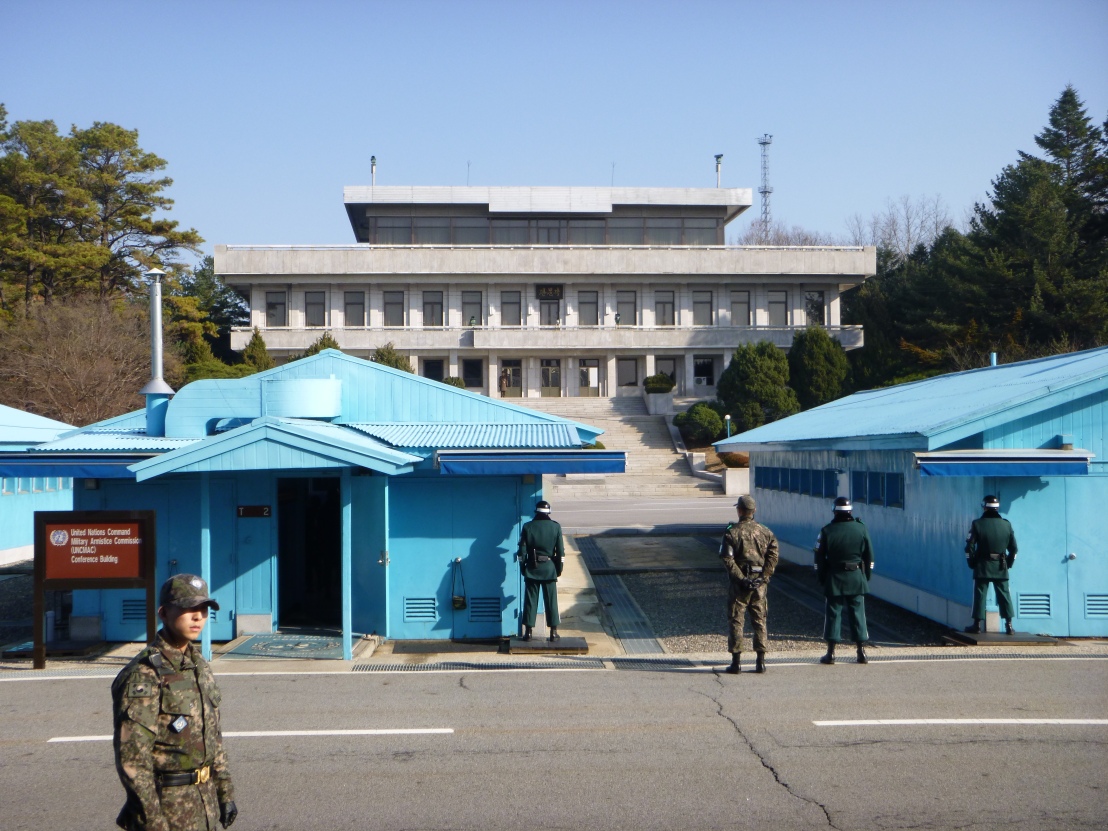 These are pictures taken from the DMZ – the de-militerized zone between North and South Korea. The blue buildings above act as meeting rooms for peace talks, built directly between the N/S boarder. After hearing so much about the history and heartbreak of the civil war, (and America’s involvement in it) it was mind-numbing to actually visit the physical place of so much tension, fear, and propaganda. What did I know about North Korea while I lived in America?
These are pictures taken from the DMZ – the de-militerized zone between North and South Korea. The blue buildings above act as meeting rooms for peace talks, built directly between the N/S boarder. After hearing so much about the history and heartbreak of the civil war, (and America’s involvement in it) it was mind-numbing to actually visit the physical place of so much tension, fear, and propaganda. What did I know about North Korea while I lived in America? As I touched the silky ribbons tied to a wall between the North and South, adorned with the names of classes mates and schools crying out for peace, I wondered if the way I was taught to look at the North was hindering the peace so many voices cry out for. I’d never tried to think of North Korea as anything else. Not as a country who’s seen terrible war crimes. Not as a country who’s been threatened by air raids by the US. Not as a country who’s people are dearly loved by God. Historically, the act of “othering” only puts us farther away from our enemy, not closer. The distance makes us unwilling to talk to settle disputes, unwilling to respect the other.
As I touched the silky ribbons tied to a wall between the North and South, adorned with the names of classes mates and schools crying out for peace, I wondered if the way I was taught to look at the North was hindering the peace so many voices cry out for. I’d never tried to think of North Korea as anything else. Not as a country who’s seen terrible war crimes. Not as a country who’s been threatened by air raids by the US. Not as a country who’s people are dearly loved by God. Historically, the act of “othering” only puts us farther away from our enemy, not closer. The distance makes us unwilling to talk to settle disputes, unwilling to respect the other.
 Merry Christmas!
Merry Christmas!
